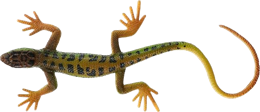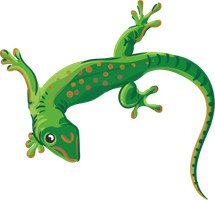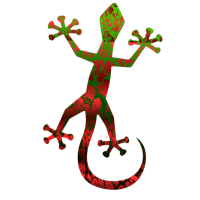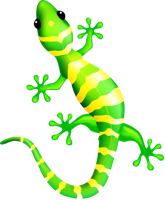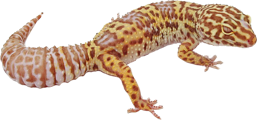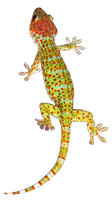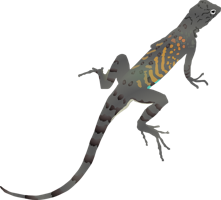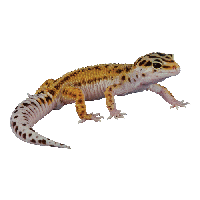In this gecko page you can download free gecko PNG images: gecko PNG images free download
In this gallery of gecko, we have 70 free PNG images with transparent background.
Geckos are small, primarily carnivorous lizards found across the globe, inhabiting warm climates on every continent except Antarctica. They belong to the infraorder Gekkota and exhibit a wide range in size, from 1.6 to 60 centimeters (0.6 to 23.6 inches). What sets geckos apart from other lizards is their vocalizations, varying from species to species. Most geckos in the family Gekkonidae communicate through chirping or clicking sounds during social interactions. Some species, like the Tokay gecko (Gekko gecko), are known for their loud mating calls, while others can produce hissing noises when threatened.
With around 1,500 different species worldwide, geckos are the most diverse group of lizards. The term "gecko" derives from the Indonesian-Malay word "gēkoq," imitative of the sounds some species make. Unlike lizards in the family Eublepharidae, geckos lack eyelids. Instead, they have a transparent membrane covering the outer surface of the eyeball, known as the cornea. To maintain cleanliness and moisture, geckos lick their corneas since they cannot blink.
Geckos are primarily nocturnal, with exceptional night vision and color sensitivity. Their eyes have evolved from diurnal ancestors, losing rod cells and modifying cone cells to enhance vision in low light. They possess three different photo-pigments sensitive to ultraviolet, blue, and green light. Geckos also employ a multifocal optical system, allowing them to generate sharp images at varying depths.
While most gecko species are nocturnal, some are diurnal and active during the day, evolving independently multiple times. Many geckos are known for their specialized toe pads, enabling them to climb smooth vertical surfaces and even traverse indoor ceilings effortlessly. Often found in warm regions, some gecko species, like the house gecko, inhabit human dwellings and help control insect pests.
Similar to other lizards, geckos can shed their tails as a defense mechanism, a process called autotomy. This allows them to escape predators, as the detached tail distracts the attacker. The largest known gecko species, the kawekaweau, was likely native to New Zealand but became extinct in the late 19th century due to invasive species introduced during European colonization. On the other end of the scale, the Jaragua sphaero is the smallest gecko, measuring a mere 16 millimeters (0.63 inches) in length and discovered in 2001 on an island off the coast of Hispaniola.
